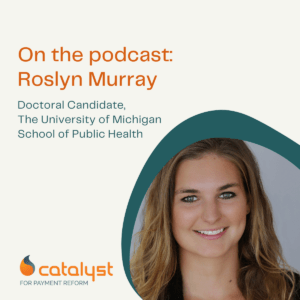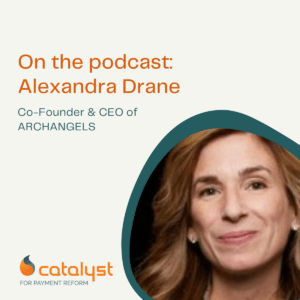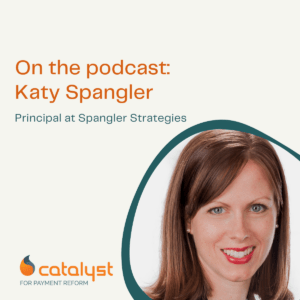
One More Thing to Add to the Benefits Manager’s Job Description
If you go to any job search site and look at open positions for a Director of Benefits, you’ll likely see common themes: the ideal candidate will develop and implement

If you go to any job search site and look at open positions for a Director of Benefits, you’ll likely see common themes: the ideal candidate will develop and implement

Suzanne calls Alice Hm Chen, Chief Medical Officer at Covered California, and asks about her work in quality measurement and health equity.
As the nation’s largest state-based health insurance exchange, how is Covered California thinking about its responsibility to deliver equitable care to its member population?
“I think a key thing for everyone to embrace is, equity is quality…you won’t get to true high-quality care unless you are addressing equity.”

Purchasers, brace yourselves for a radical idea: the time has come for state governments to restore balance, competition and affordability to health care markets. Recognizing that regulation is usually considered

If ever there was a worldwide phenomenon that perfectly captured the concept of “two sides of the same coin” it would be COVID-19. The pandemic exploited the weaknesses of our

Suzanne Delbanco speaks with Roslyn (Roz) Murray, a doctoral candidate at The University of Michigan School of Public Health and former Catalyst for Payment Reform employee.
Roz delves into her first peer-reviewed paper in Health Affairs, which concludes that the evidence on commercial value-based payment models is mixed. This is the first systemic review of the quality, spending, and utilization effects of commercial models, extracting results from fifty-nine studies.
Suzanne and Roz dive into why there is such little research in the commercial sector on value-based payment and compare Roz’s findings to research done in the public sector.

Catalyst for Payment Reform, like many employers or teams, has operated in a fully remote work environment since the start of the pandemic. Last week, our team had our first

April 11-17 is Black Maternal Health Week, which shines a spotlight on the disproportionately poor maternal health care and health outcomes Black mothers experience. While these outcomes are the proof,

My name is Torie Nugent-Peterson and I’m the newest member of the Catalyst for Payment Reform (CPR) team. As CPR’s Operations and Marketing Associate, I will be responsible for coordinating

On February 10, 2022 price inflation jumped by 7.5% over the past 12 months, its highest annual increase in 40 years. For employers and other health care purchasers that monitor their claims cost and utilization data religiously (who doesn’t?), this news prompts questions from purchasers about how inflation will impact their future health care spend.

The State of Massachusetts made headlines when its Health Policy Commission (HPC) launched what the press called “a double-barreled attack” on Mass General Brigham’s expansion plans. In the first of its one-two punches, the HPC concluded that Mass General’s $2.3B plan was “not consistent with the Commonwealth’s goals for cost containment.”

Suzanne Delbanco speaks with Alexandra Drane, Co-Founder & CEO of ARCHANGELS, diving into the critical role of caregivers and why they must be part of the clinical care team. She also discusses how ARCHANGELS’ Caregiver Intensity Index (CII) is designed to engage caregivers and help them see themselves in the role.

December is wrapping up and the New Year is right around the corner. But just before looking ahead to 2022, CPR is taking one last look back at 2021. We’re highlighting the Top 10 podcasts and featured experts of this year. These insights are definitely worth revisiting (and remembering in the year to come!).

Suzanne and Jo discuss the recent growth in APCDs across the country, renewed federal interest in APCDs, how states are collecting and sharing the information in their APCDs, and data barriers. Suzanne and Jo also discuss the benefits of APCD data for employers and other health care purchasers looking to create high-value benefits and health care programs for members.

December is a time for reflection: both on the year that passed, and on the year to come. December is also a time for giving – regardless of one’s faith or lack thereof. This got us thinking at CPR: if we could give one gift to the American health care system in 2022, what would it be, and what can we at CPR do to make our wish-list a reality in the year to come?

In a prior blog article on the 2021 KFF Employer Health Benefits Survey, we noted that employers are in the eye of a hurricane and will have to confront some painful tradeoffs when costs spiral again. But the significant exceptions to employers’ “wait and see approach” to health care benefits during the first year of the COVID-19 pandemic are in the areas of telehealth and behavioral health, including at the intersection of the two.

KFF released results from its 2021 survey on trends in employer health benefits. The topline takeaway: not much has changed. Employers appear committed to maintaining the status quo, with a few key adaptations that speak to the necessities of managing health care benefits during a pandemic. In 2021, employers are in the eye of a hurricane, but what comes next?

Purchasers: how many times have you attended a meeting with your health plan that focused solely on high-level concepts and success stories, but not a meaningful, tactical conversation about the issues of greatest concern to you? CPR’s Health Plan User Groups (HPUGs) are like a client advisory group meeting, but turned upside down: the clients, not the health plans, set the agenda, offering a forum for a substantive and rich two-way dialogue.

Colorado passed legislation authorizing the creation of its APCD in 2010. Today, the database houses over 718 million medical, dental and pharmacy claims from 44 payers (including 35 commercial plans). What makes Colorado’s APCD so powerful, however, is its pairing with the publicly-facing reporting and analysis that CIVHC provides.

Suzanne Delbanco speaks with Katy Spangler, Principal at Spangler Strategies, about recent federal activity on health care price transparency and what employers need to know moving forward.

Employers and other health care purchasers – it’s time to step off of the sidelines and onto the field. Across CPR’s membership and broader audience, there has never been more innovation and agency among health care purchasers than there is today.